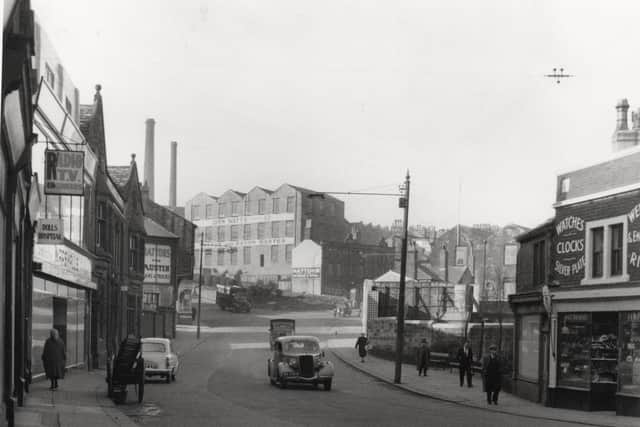From the Burnley Express Archive: Roadworks uncover ancient Burnley bridge
and live on Freeview channel 276
We are on what is now called Lower St James’s Street where the council, and its partners, are carrying out some improvement works, roughly from the Empire Theatre to the river Calder.
I looked at the site last week, for about the fourth or fifth time in about three weeks. The reason for this is that a significant part of Burnley’s history has been uncovered in the workings to strengthen “the Brig”.
Advertisement
Hide AdAdvertisement
Hide AdThis is the name which used to be given to this site. It comes from “the bridge” which was one of the most prominent features at this location for several centuries. The bridge, itself, might even have had medieval origins but the first date associated with it is 1650 when a petition was presented to the county magistrates indicating that it was in need of repair.


Of course, “the Brig” became “Bridge End”, a name which was perpetuated by the brewery which stood there. That, of course, was Massey’s Brewery. Bridge End Brewery which had been founded, in 1750, probably on that site, but not by the Massey’s – they didn’t come into active ownership until 1830.
Bridge End became the second most important area in Burnley, after the area near to St Peter’s. The latter was known as “the Top o’ th’ Town” and Bridge End, which had early houses, at least one public house and several early workplaces, was “the Bottom o’ th’ Town”.
The river here is the Calder which, in the past, divided Burnley from its larger (in area) neighbour, Habergham Eaves. Burnley, with the church, the school, the ancient corn mill and, significantly, the market, was, by some distance, the more important, but “the Brig” was a distant number two, out-ranking, in importance, everywhere else in Burnley except, of course, Padiham.
Advertisement
Hide AdAdvertisement
Hide AdSo, what has been discovered at Bridge End? An early version of the bridge has been unearthed, a little lower down than I thought would be the case. Stephen Riley, an old friend of mine, and I visited the site together, perhaps three weeks ago and, from the car park of the former supermarket, we could see this definite bridge shape, probably with three arches, some feet below the level of the road.
It appears that this structure was part of an older stone-built bridge, but of what date we could not determine. A helpful LCC engineer replied to an enquiry made by Stephen. Unfortunately, he admitted that the LCC does not have a record of the construction date of the masonry arches.
He added that the original arch bridge (the one now visible) is actually three separate arches, constructed of ashlar stone. Ashlar is the best quality building stone so LCC can congratulate themselves on that, as I suspect that Lancashire may have been responsible for many of Burnley’s older bridges. This would have been one of them.
Comment Guidelines
National World encourages reader discussion on our stories. User feedback, insights and back-and-forth exchanges add a rich layer of context to reporting. Please review our Community Guidelines before commenting.